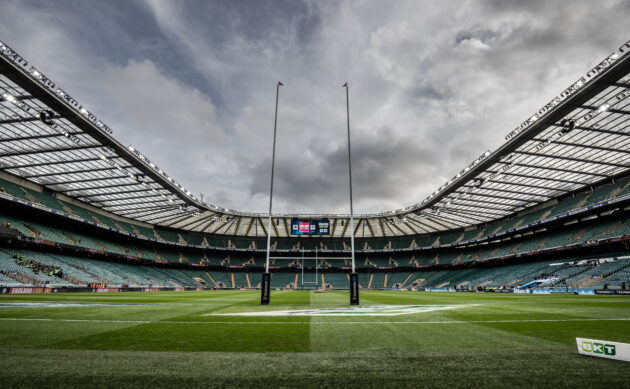The dimensions you need to know when it comes to rugby union
The size of a rugby pitch is an element that new fans may not know.
According to the most recent World Rugby laws, a rugby pitch should be a maximum length of 100 metres and a minimum length of 94m.
Read more: What is a maul?
The pitch should be between 70 and 68 metres wide and have an in-goal area, the part between the goal-line and the dead-ball line, of between 22 metres and six metres. That gives a playing area ranging somewhere between 7,200 and around 10,000sqm.
The perimeter area, around the rectangular playing surface, outside the touchlines and behind the dead-ball line should be at least five metres wide so players can throw in at lineouts and hopefully avoid crashing into advertising hoardings.
It also gives room for huge numbers of support staff and water carriers to stand before invading the pitch every time the referee halts play and sometimes when he or she doesn’t.
Simple enough, the standard dimensions have a pretty tight range, apart from one which is the length of the in-goal area. And this can be used by home ground staff and coaches, to pull a bit of a fast one.
Some dead-ball areas are smaller than others and you can see what the advantages and disadvantages could be. A big in-goal area could encourage teams with speedy wingers to kick over, or through, the defence more to use the space to make tries and short in-goal areas can have the opposite effect.
Teams get used to playing on a pitch with certain dimensions and it is only in recent years that England’s training pitch at their Surrey base was made exactly the same size as the one at Twickenham. It might not have the same mystique as a cricket pitch but it can have an influence on the game and tactics.
What are the different lines on a rugby pitch?
The goal-lines and dead-ball lines mark out the ends of each pitch, but there are various other lines on it.
The touchlines on either side are used to determine when the ball or a player goes out of play. Then there are the 22m lines at each end just under halfway between the try-line and the halfway line, which is on errr, halfway, and the 10m (dashed) lines.
When the length of the pitch, or field of play, is less than 100m the distance between the 10m and 22m lines is reduced proportionately. Easy.
Plus, there are the 5m and 15m dashed lines that run the length of the pitch that are important for the lineout in rugby, as well as the 5m line that runs parallel to the try-line and is the closest distance scrums and lineouts can take place from the try-line.
Find out what the lines on a rugby pitch mean here.





